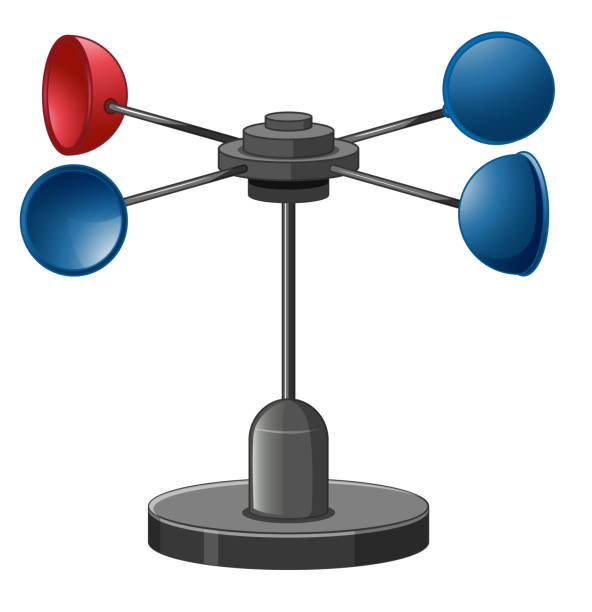Contrasting Digital and Mechanical Anemometers: Which is Right for You?
Contrasting Digital and Mechanical Anemometers: Which is Right for You?
Blog Article
Anemometers Unveiled: Comprehending Their Importance in Environmental Tracking and Precaution
The duty of anemometers in ecological monitoring and precaution is frequently ignored, yet their value is obvious. These tools have a lengthy history rooted in scientific questions and technical advancements, evolving to come to be important devices in different fields. From meteorology to aeronautics safety and security, anemometers play an essential role in providing exact data that informs decision-making procedures and boosts general safety. Recognizing the details of anemometers introduces a globe of vital insights that are basic to our understanding of the atmosphere and the measures we require to make sure security.
History of Anemometers
The evolution of anemometers can be traced back to the old civilizations where primary wind determining tools were first made use of. These early wind dimension devices laid the foundation for the growth of much more innovative anemometers in time. Among the earliest well-known anemometers was the hemispherical cup anemometer designed by Leon Battista Alberti in the 15th century. This style was composed of four hemispherical cups that gathered wind energy, giving a measurement of its intensity based upon the speed of rotation.
Over the years, developments in modern technology led to the growth of even more contemporary anemometers, including ultrasonic anemometers and laser Doppler anemometers, using increased precision and performance in gauging wind speed and direction. The history of anemometers showcases a remarkable trip of technology and progression in the field of meteorology.
Types of Anemometers
Throughout the area of weather forecasting, different sorts of anemometers have been developed to properly determine wind speed and instructions. One of the most common kind is the cup anemometer, which includes 3 or 4 cups placed on horizontal arms that rotate with the wind. As the cups rotate, the speed at which they rotate is straight symmetrical to the wind rate. One more widely made use of type is the vane anemometer, which features a tail or fin that aligns itself with the wind instructions. This alignment permits the gadget to figure out the wind direction. Sonic anemometers utilize ultrasonic signals to gauge wind speed and instructions properly. They are generally utilized in research applications as a result of their high precision. Hot-wire anemometers run based upon the principle that the cooling result of wind on a heated cord is proportional to the wind speed. These anemometers are ideal for measuring low wind speeds with high accuracy. Each type of anemometer has its toughness and is selected based upon the particular demands of the monitoring job at hand.
Applications in Weather Forecasting
Having discussed the different kinds of anemometers utilized in meteorology for gauging wind rate and instructions, it is necessary to discover their practical applications in the field. Anemometers play a critical duty in meteorology by offering real-time and precise data on wind problems (anemometer). Meteorologists make use of anemometers to monitor wind rate and direction to forecast climate patterns, issue warnings for extreme weather condition events like cyclones, storms, and twisters, and evaluate atmospheric conditions for aeronautics safety and security
In weather visit the site forecasting, anemometers aid in recognizing regional and neighborhood wind patterns, which are essential for predicting climate adjustments and establishing climatic trends. These gadgets are additionally utilized in research study to study microclimates, city warmth islands, and air pollution dispersion. Furthermore, anemometers are utilized in farming to maximize plant administration practices, such as watering and chemical application, based upon wind conditions.
Importance in Aeronautics Security
An important element of ensuring aeronautics security depends on the careful monitoring of wind problems using anemometers. Anemometers play an essential duty in air travel by giving real-time information on wind speed and instructions, aiding pilots in making educated decisions throughout flight, liftoff, and landing. Strong and uncertain winds can considerably influence airplane operations, making it important for air travel authorities to rely upon precise wind dimensions to make certain the safety and security of travelers and team.

In the vibrant environment of air travel, where also minor adjustments in wind rate and instructions can have profound impacts, anemometers stand as essential devices for advertising risk-free and secure air traveling.
Function in Environmental Study
Anemometers play an essential function in environmental research study by offering vital information on wind rate and instructions. By precisely gauging wind features, anemometers help researchers analyze the movement of pollutants in the air, analyze the influence of commercial exhausts, and forecast the spread of pollutants in the atmosphere.


Verdict
In verdict, anemometers have actually played a crucial function in ecological surveillance and precaution. With an abundant background and different types readily available, these gadgets have been commonly used in meteorology, aeronautics security, and ecological research study. Comprehending the significance of anemometers is important for accurately gauging wind speed and direction, which is vital for anticipating weather patterns, making sure secure aviation procedures, and carrying out environmental researches - anemometer. Their payments to these areas can not be ignored.
One of the earliest well-known anemometers was the hemispherical cup anemometer developed by Leon Battista Alberti in the 15th century. Over the years, developments in modern technology led to the advancement of even more modern anemometers, consisting of ultrasonic anemometers and laser Doppler anemometers, offering enhanced accuracy and efficiency in gauging wind speed and direction. Hot-wire check anemometers run based on the principle that the cooling impact of wind on a heated cable is symmetrical to the wind speed. Meteorologists utilize anemometers to monitor wind speed and direction to anticipate weather condition patterns, problem warnings for serious weather events like storms, storms, and tornadoes, and analyze climatic conditions for aviation safety and security.
Recognizing the value of anemometers is important for accurately gauging wind rate and instructions, which is vital for predicting weather condition patterns, guaranteeing secure aviation operations, and conducting environmental studies. (anemometer)
Report this page